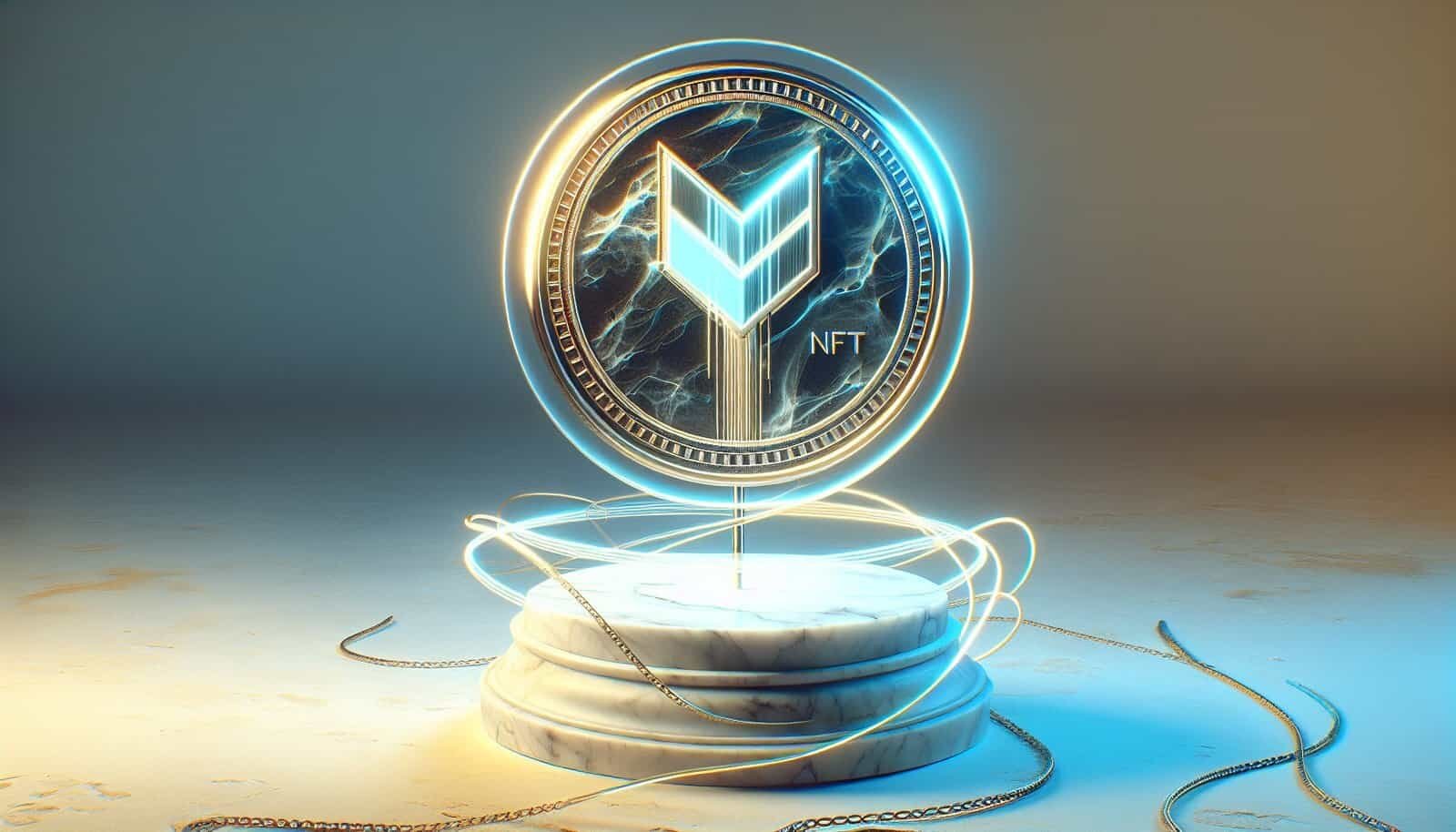Are you curious how a curated fine art marketplace built on Solana is expanding to multiple blockchains and what that means for your collecting or selling experience?
Exchange.Art – A Fine Art NFT Marketplace On Solana Expanding Into Multi-chain
Exchange.Art started as a curated platform that focuses on high-quality fine art NFTs on Solana, and it is now preparing to broaden access by supporting multiple blockchains. You’ll find that this expansion aims to connect artists and collectors across ecosystems while addressing technical and economic trade-offs.
What is Exchange.Art?
Exchange.Art is a curated marketplace designed around fine art rather than mass-market collectibles, and it emphasizes provenance, artist reputation, and gallery-grade presentation. You’ll see curated drops, artist-focused pages, and features intended to replicate the gallery experience online while leveraging blockchain provenance.
Why fine art NFTs matter to you
Fine art NFTs let you buy, sell, and verify ownership of digital artworks in ways that traditional galleries cannot, offering transparent provenance and programmable royalties. If you’re an artist, collector, or investor, this shifts rights management and secondary market revenue in ways that directly benefit your financial and curatorial interests.
Core Features of Exchange.Art
This section breaks down the functionality that makes the platform appealing to you as an artist or collector. Each feature is designed to mirror a gallery-grade experience while leveraging blockchain strengths.
Curation and quality control
Exchange.Art emphasizes curated drops and selection, which means you’ll encounter a smaller set of high-quality artists rather than a flood of unfiltered projects. That curation is intended to protect collector confidence and preserve long-term value for the works listed.
Minting and metadata standards
Minting on Exchange.Art leverages Solana’s token standards and metadata structures, ensuring your work carries persistent provenance and metadata pointers. You’ll want to understand how metadata is stored (on-chain vs. off-chain like IPFS) because that affects permanence and attribution.
Sales mechanics: auctions and fixed-price drops
The platform supports both timed auctions and fixed-price sales, giving you flexibility depending on how you want to acquire or release artwork. Auctions can drive discoverability and collector engagement, while fixed-price drops provide certainty for buyers and sellers.
Royalties and creator compensation
One of the core attractions for artists on Exchange.Art is native royalty support—meaning you’ll receive a percentage of secondary sales when a marketplace enforces royalties. You should check whether royalties are enforced on-chain or rely on marketplace policy, especially as multi-chain operations grow.
Wallets, payments, and UX
You’ll use Solana-compatible wallets like Phantom or Solflare to connect and transact, and the experience emphasizes low fees and quick confirmations. As the platform expands to other chains, you’ll have more wallet options and payment rails, and you should verify which wallets the marketplace supports for each chain.

Solana as the initial home
Solana provided specific advantages that attracted Exchange.Art when it launched, and those trade-offs informed the platform’s initial design and user experience.
Scalability and low transaction costs
Solana offers high throughput and very low fees, which keeps the cost of minting and secondary transactions down for you, whether buying or selling. This low-cost environment makes smaller editions and frequent interactions more economical.
Technical architecture: SPL tokens and Metaplex
Solana-based NFTs follow SPL token conventions and often use Metaplex metadata standards, which are designed to store metadata pointers and essential attributes. If you’re technical, you’ll want to know how metadata links (often to IPFS) are used to ensure content persistence.
Wallet ecosystem and integrations
Popular Solana wallets like Phantom, Solflare, and others provide user-friendly onboarding and familiarity for collectors who already operate in the Solana ecosystem. You’ll find that these wallets have robust browser integrations, which simplifies connecting, signing, and managing your NFTs.
Moving to multi-chain
Expanding beyond Solana is a significant strategic and technical decision. You’ll benefit from increased accessibility, but there are important complexities you’ll need to understand.
Why move beyond one chain?
Multi-chain expansion increases the pool of potential collectors and artists, reduces single-chain dependence, and allows the platform to match art formats to chain strengths. If you participate across ecosystems, multi-chain access can improve liquidity and visibility for your work.
Technical and governance challenges
Running across multiple chains raises questions of cross-chain provenance, royalty enforcement, and metadata canonicalization. You’ll need clarity on how authenticity is preserved when assets are bridged or represented on different chains.
Approaches to multi-chain support
There are several technical patterns Exchange.Art can use: native minting on each chain, bridging assets while keeping a canonical record, or using wrapped token representations. Each approach affects how you verify original ownership and whether royalties travel with the asset.
Ensuring provenance and royalties across chains
You’ll want the platform to maintain cryptographic links to the original on-chain record regardless of where a token is traded. Enforcing royalties across different marketplaces requires coordination with each target chain’s marketplaces or embedding economic rights into the token’s smart contract in a way that’s portable.

Chain comparison: key characteristics you should know
This table summarizes major chains that Exchange.Art could integrate with and highlights features that matter to you as a user or creator.
| Chain | Native NFT Standard | Typical Fees | Consensus / Energy | Developer Ecosystem | Benefits for Fine Art |
|---|---|---|---|---|---|
| Solana | SPL / Metaplex | Very low | PoH/PoS (efficient) | Rapid growth, low cost tools | Low minting fees, fast tx |
| Ethereum | ERC-721 / ERC-1155 | High to moderate (gas) | PoS (since Merge) | Largest ecosystem | Broadest collector base, standards compatibility |
| Polygon | ERC-721/1155 (EVM-compatible) | Low | PoS/L2 solutions | EVM tooling, low cost bridge options | Lower fees + Ethereum compatibility |
| Tezos | FA2 | Low | Energy-efficient (Liquid PoS) | Growing art community | Lower fees, art community focus |
| Flow | Cadence-based NFTs | Moderate | Designed for consumer apps | Strong for branded projects | UX-friendly, used in art/games |
You should use this table to weigh trade-offs like fees, collector audience, and developer tools as you think about where to list or buy.
What multi-chain means for artists
Artists will gain broader exposure and potentially better access to collectors, but you’ll need to plan for technical and administrative complexity.
Benefits for artists
You’ll be able to reach collectors who prefer Ethereum wallets, or those on L2s and alternative chains, increasing potential sales and secondary market engagement. Cross-chain presence can help you diversify exposure and reduce dependency on a single ecosystem’s market cycles.
Practical steps to mint and list across chains
You’ll follow similar steps: apply or be approved by the marketplace, prepare high-quality media and metadata, and select the chain and royalty settings for minting. If Exchange.Art supports native minting on each chain, you’ll choose where you want the canonical version to live and whether to mint editions or singletons.
Considerations about royalties and licensing
You’ll want to specify clear licensing terms and set royalty percentages that reflect your long-term strategy. Since royalty enforcement varies by chain and marketplace, you should learn whether secondary sales on other platforms honor those royalties automatically or require coordination through contracts and platform policies.

What multi-chain means for collectors
As a collector, the expansion brings more options but also responsibilities to verify provenance and manage cross-chain holdings.
Buying and verifying authenticity
You’ll look for cryptographic provenance and a clear link back to the artist’s canonical issuance. Be cautious if a work is represented in multiple places; always verify whether the marketplace provides a clear canonical record and if the token is a wrapped or bridged representation.
Managing wallets and custody
You may need multiple wallets or a wallet that supports multiple chains to hold and interact with assets across ecosystems. You’ll want a secure strategy for private key management and consider hardware wallets for high-value items.
Secondary market considerations
You’ll check whether royalties travel with the token and whether marketplaces you use honor those royalties. If a token is moved across chains, know how that affects its resale value, metadata integrity, and display capability in galleries or social platforms.
Technical approaches to cross-chain NFTs
This section unpacks the mechanisms Exchange.Art might use and what you should understand about each.
Native multi-chain minting
If the marketplace mints natively on each chain, you’ll get a native token for each chain with its own smart contract. You’ll enjoy native liquidity but face fragmentation of provenance unless a canonical registry is maintained.
Bridging and wrapped representations
Bridges lock an asset on the origin chain and issue a wrapped token on the target chain. You’ll see wrapped tokens often labeled as “bridged” and you should confirm the bridge’s security and custodian model before buying. Wrapped tokens can complicate royalty enforcement and provenance tracking.
Cross-chain registries and canonical records
A canonical registry on a coordination layer can record where the original token lives, acting as a single source of truth you can query. You’ll prefer marketplaces that provide accessible canonical records so you can always verify authenticity regardless of where you encounter the asset.
Interoperability protocols and metadata standards
To remain interoperable, metadata standards need to be consistent or translatable across chains. You’ll want metadata hosted on neutral, persistent storage (like IPFS or Arweave) to ensure that art content remains accessible even if chains or marketplace UIs change.

Fees, economics, and how they affect you
Understanding fee structures is essential whether you’re buying, selling, or minting.
Upfront minting fees
On Solana, you’ll typically pay low minting fees, making editions affordable. On Ethereum, you may pay higher gas costs, although L2s and rollups lower these fees; plan your minting timing and use batching where possible.
Marketplace fees and commissions
Exchange.Art may charge a marketplace commission on primary and secondary sales. You’ll want clarity on commission percentages, payment methods, and whether platform fees differ by chain.
Royalty splits and secondary market economics
You’ll confirm how royalty splits are distributed among stakeholders—artist, gallery, platform—and whether splits persist across chains. Persistent, enforceable royalties benefit artists and collectors who value fair compensation for creators.
Security, audits, and best practices
Security is a major concern across chains. You’ll benefit from platforms that prioritize audits and transparent risk disclosures.
Smart contract audits and transparency
You should look for public audit reports and disclosures about how contracts operate. If you’re about to mint or buy high-value works, prioritize marketplaces with audited contracts and clear vulnerability responses.
Bridge security and custody risks
Bridges introduce additional attack surfaces, so you’ll want to know whether assets are held in multi-sig custodial setups or custodial contracts. You’ll favor well-reviewed bridges and those with strong insurance or mitigation plans.
Metadata permanence and content hosting
Ask whether the marketplace pins files to decentralized storage like IPFS or Arweave and whether there is redundancy. You’ll prefer platforms that avoid centralized URLs for media assets to reduce the risk of broken links or content loss.

Legal, tax, and rights considerations
Blockchain shifts some aspects of legal ownership, but many traditional legal questions still apply to you.
Intellectual property and licensing
You’ll want to document what rights you obtain when you buy an NFT—they often confer ownership of the token but not necessarily copyright. Artists and collectors should include clear licensing terms in metadata or sale agreements.
Tax treatment and reporting
NFT transactions may be taxable events depending on jurisdiction, including capital gains on sales. You should consult a tax professional who understands digital assets to confirm how sales, purchases, and royalties affect your tax posture.
Compliance and KYC considerations
Some marketplaces perform KYC or AML checks to comply with regulations. You’ll need to be prepared to provide identity information if required for sales or high-value transactions.
Practical guide: How to buy on Exchange.Art today
This step-by-step section helps you move from curiosity to action with confidence.
Step 1 — Prepare your wallets and funds
Set up a compatible wallet (for Solana, Phantom or Solflare) and fund it with sufficient SOL or other chain-native tokens. Confirm your wallet’s security practices and consider hardware wallets for high-value purchases.
Step 2 — Create your account and verify
Some curated platforms require sign-up or allow wallet-only access. If Exchange.Art requires additional verification, complete the necessary steps to activate buying or bidding functionality.
Step 3 — Research and verify provenance
Before you bid or buy, verify the artist profile, canonical mint record, and any provenance notes. Look for metadata links and check whether the work is part of an edition or a unique piece.
Step 4 — Place bids or buy at fixed price
Follow the marketplace flow to place bids or complete purchases. If you bid in auctions, monitor the sale and set notification preferences so you don’t miss out.
Step 5 — Manage your acquisitions
Once you own an NFT, decide whether to keep it in your hot wallet for quick trading or transfer it to cold storage for long-term custody. Keep records of purchases and receipts for provenance and tax purposes.
Practical guide: How to mint on Exchange.Art
If you’re an artist, these steps will help you prepare for a successful mint and sale.
Step 1 — Prepare high-quality files and metadata
Create archival-grade files, provide descriptions, and prepare licensing and edition information you want encoded. Use standardized metadata fields and host content on decentralized storage for verifiable permanence.
Step 2 — Apply for curation or follow onboarding
Follow Exchange.Art’s artist onboarding process, which may involve an application or curation review. Present your CV, previous exhibitions, and links to professional work to improve your acceptance chances.
Step 3 — Choose chain, royalties, and sale format
Decide whether to mint on Solana or another supported chain, set royalty percentages, and select auction vs. fixed sale. Think about how chain choice affects fees and collector access.
Step 4 — Mint, promote, and manage post-sale
After minting, promote your drop through your channels and collector networks. Manage post-sale elements like exhibition rights, shipping of physical counterparts (if applicable), and ongoing engagement with collectors.
FAQs: Quick answers to common questions you might have
This section gives short, practical answers to typical concerns you’ll face.
Will royalties be honored if an NFT moves across chains?
Royalties are honored only when marketplaces and smart contracts enforce them; wrapped or bridged tokens can complicate enforcement. You should confirm platform policies and prefer canonical minting strategies that keep royalties attached.
How do I verify that a work is authentic?
Check the canonical mint transaction, artist profile, and platform curation notes. Look for cryptographic provenance, consistent metadata, and public records linking the token to the artist.
Can I transfer NFTs between wallets on different chains?
You can move tokens between wallets on the same chain, but cross-chain transfers require bridges or wrapping, which add complexity and risk. Understand bridge mechanisms and custody implications before moving assets.
What happens if metadata or media is lost?
If media is hosted centrally, it can be lost or removed; decentralized hosting (IPFS/Arweave) reduces that risk. Ensure that the metadata contains pointers to persistent storage and keep local backups.
Future outlook: How this affects your collecting and creative practice
Multi-chain expansion changes the dynamics of provenance, access, and liquidity, and you’ll want to adapt strategically as an artist or collector.
Increased accessibility, but also fragmentation
You’ll gain access to more collectors and artists, but you’ll also see provenance spread across chains if canonicalization isn’t enforced. Strategically, you should centralize your artist profile or canonical records to keep credibility intact.
Evolving standards and platform competition
As standards mature, you’ll benefit from better interoperability and clearer royalty frameworks. Keep an eye on standardization efforts that aim to make NFTs portable and royalties enforceable across chains.
How you should prepare
Whether you collect or create, stay informed about metadata best practices, custody options, and the specific policies Exchange.Art applies to each chain. Invest time in understanding canonical records and choosing platforms that prioritize provenance and security.
Final thoughts
You’re witnessing a moment where gallery-grade curation and blockchain technology converge to redefine fine art markets. Exchange.Art’s move toward multi-chain participation promises broader access and interesting technical challenges, and your success will depend on careful attention to provenance, security, and the economics of cross-chain activity. Keep asking questions, verify canonical records, and adopt best practices for custody and metadata to make the most of this evolving landscape.
